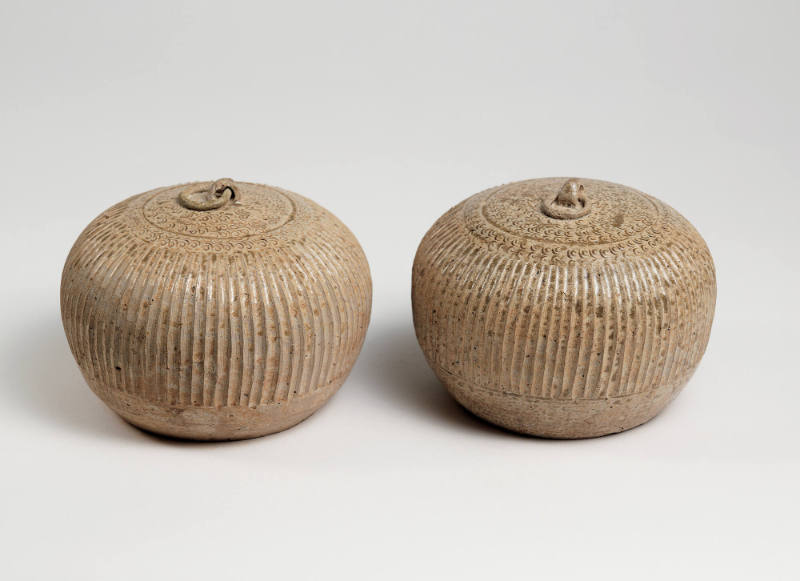
Object Details
Culture
Korea
Date
Unified Silla; 8th or 9th century
Medium
Earthenware
Dimensions
Diameter: 6 inches (15.2 cm)
Credit Line
Gift of Colonel John R. Fox
Object
Number
65.341
BRIEF DESCRIPTIONThis is a ceramic tile that once decorated the eave of a tiled roof.WHERE WAS IT MA(…)
BRIEF DESCRIPTIONThis is a ceramic tile that once decorated the eave of a tiled roof.WHERE WAS IT MADE?This tile was made in Korea during the Unified Silla period (668-935). During this period, the Korean peninsula was unified with the help of the Tang dynasty in China.HOW WAS IT MADE?Roof-end tiles like this one were made using wooden molds. Clay was pressed into the mold, removed to dry, and then fired in a kiln to harden. This is actually a fragment of the full tile; complete tiles consist of two parts, the flat decorated tile, and semi-cylindrical body tile attached to the back. This circular shaped roof-end tile is called sumaksae.HOW WAS IT USED?The ceramic tile roofs of aristocratic homes, governmental buildings, and religious buildings, such as Buddhist temples, were decorated at the eaves with tiles such as this one. This practice was introduced from China in the first century, and Korean potters have been making them ever since.WHY DOES IT LOOK LIKE THIS?This tile features a stylized Buddhist motif of four large “precious visage flowers,” called bosanghwa. A lotus flower, another important Buddhist symbol, is indicated by a central seedpod and the thin lines of petals between the larger flowers. To see other Korean roof-end tiles in the Johnson Museum’s collection, search for object numbers 65.342 and 65.343 in the keyword search box.












